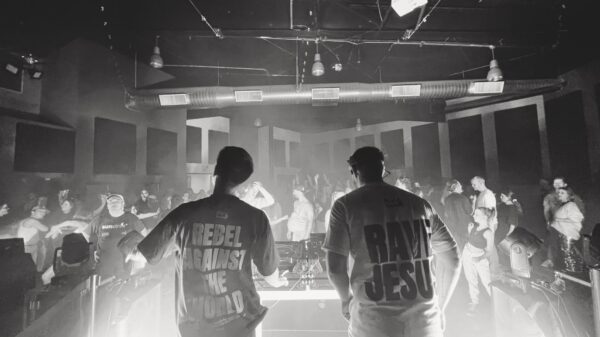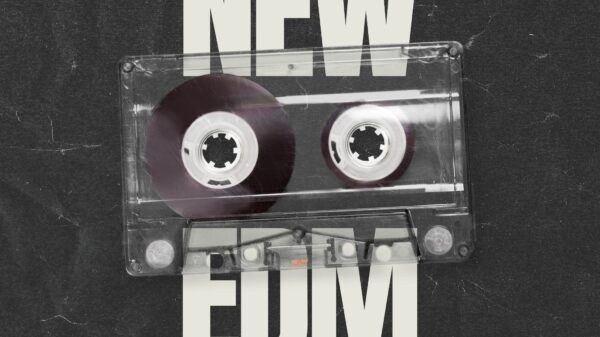Trying to categorize music is like herding cats – it's impossible to get a consensus on anything. Music lovers have passionately argued for decades over what does and does not constitute a particular genre, and there are always going to be grey areas. That said, here is a list of music genres that will start a lot of arguments! Rap, R&B, rock, metal, punk, pop, country, classical, jazz, folk, blues, electronic… And that's just the tip of the iceberg. There are literally thousands of different music genres out there, and new ones are being created all the time. So whatever your taste in music, there's sure to be a genre that you'll love.
- Alternative
If you ask ten different people what alternative music is, you'll probably get ten different answers. That's because the term “alternative” is notoriously difficult to define. In its broadest sense, alternative music can be used to describe any type of music that falls outside of the mainstream. This includes everything from avant-garde jazz to experimental rock to emerging hip-hop artists. However, the term is also often used to describe a specific style of music that emerged in the 1980s and 1990s, characterized by its underground sensibilities and DIY aesthetic. While alternative music has evolved significantly over the past few decades, it continues to provide a platform for artists who are looking to challenge convention and push the boundaries of popular culture.
Anime music refers to the soundtrack of anime films, television series, and video games. It is typically characterized by its mix of traditional Japanese music with Western pop music, as well as by its use of electronic instruments and synthesizers. In recent years, anime music has become increasingly popular outside of Japan, with numerous fan remixes and covers being created for various anime titles. Whether you’re a fan of traditional Japanese music or modern pop, there’s likely an anime soundtrack that will appeal to you. So why not give it a try? You might just find yourself singing along to your favorite anime tunes.
- Blues
Blues music is a genre of music that originated in the American South in the late 19th and early 20th centuries. The first recordings of blues music were made in the 1920s, and the style quickly spread to other parts of the country. Blues music is characterized by its use of blue notes, which are notes that are played at a slightly lower pitch than standard notes. This gives blues music its distinctive sound. Blues music is also known for its lyrics, which often deal with topics such as love, heartbreak, and hardship. The blues has had a significant impact on other genres of music, including rock and roll, jazz, and pop. Many of the most popular musicians in these genres have been influenced by the blues.
- Children’s Music
Children's music is a genre of music that is specifically designed for children. The earliest examples of children's music date back to the medieval period, when troubadours and minstrels would sing songs to entertain young audiences. In the modern era, children's music has taken on many different forms, from lullabies and nursery rhymes to playful POP songs and educational tunes. While some children's music is created for entertainment purposes, other songs are intended to teach young listeners about important concepts like safety, hygiene, and the alphabet. No matter what its purpose, children's music typically features simple melodies and lyrics that are easy for little ones to follow along with.
- Classical
Classical music is often perceived as being staid and stuffy, but nothing could be further from the truth. In actuality, classical music is a rich and vibrant genre that encompasses a wide range of styles and expression. From the delicate beauty of a Mozart minuet to the bombastic power of a Beethoven symphony, classical music has something to offer everyone. And while the origins of this genre can be traced back to the 18th century, its influence can still be felt in today's contemporary composers. So whether you're a long-time fan of classical music or just starting to explore this incredible genre, there's something here for you. So sit back, relax, and let the beauty of classical music wash over you.
- Comedy
Comedy has been called the spice of life, and there's certainly a lot of truth to that. After all, what would the world be like without laughter? But have you ever wondered what exactly comedy is? Well, there's no need to wonder any longer. Comedy is simply the art of making people laugh. Of course, that's a bit of a oversimplification. There's also an element of surprise involved. After all, nobody laughs when they know what's coming. The element of surprise is what makes comedies so memorable. And it's also what makes them so popular. After all, who doesn't like to laugh? So next time you're feeling down, just remember that laughter is only a comedy away.
- Commercial
Commercial music is any music that is generally produced and distributed for the purpose of making a profit. This includes music that is created for use in advertising, movies, television shows, and other media. It can also refer to music that is specifically designed to be sold as a commodity, such as pop songs or other types of popular music. While commercial music may not always be of the highest quality, it often has a wide appeal and can be very profitable for its creators.
- Country
Country music is a genre of music that originated in the Southern United States in the early 1920s. It is a blend of folk music, blues, and gospel music. Country music often tells stories about the lives of ordinary people, and it is known for its simple, sentimental lyrics. The most popular country music artists include Hank Williams, Patsy Cline, Johnny Cash, and Dolly Parton. Country music has been influenced by other genres of music, including rock and roll and pop. However, it has remained true to its roots, and it continues to be one of America's most beloved musical genres.
- Dance (EDM – Electronic Dance Music)
EDM, or Electronic Dance Music, is a genre of music that emerged in the early 1990s. It is characterized by its heavy use of electronic instruments and synthesizers, as well as its often-fast tempo and beats. EDM has its roots in various genres such as techno, house, and trance, and has since evolved into a subculture all its own. Today, EDM is enjoyed by millions of people all over the world, and its popularity shows no signs of slowing down anytime soon. So whether you're a fan of Skrillex or Tiesto, there's something for everyone in the world of EDM.
Disney music has been enchanting audiences for decades. From classic songs like “When You Wish Upon a Star” to contemporary hits like “Let It Go,” Disney music has the power to transport listeners to another world. But what exactly is Disney music?
Disney music is, at its heart, family-friendly music. It tells stories that are relatable and timeless, and it speaks to the Universal truths that we all experience. Whether it's the joy of first love or the pain of loss, Disney music captures the human experience in a way that is both magical and real.
Disney music is also incredibly catchy. Thanks to the talented team of songwriters and composers at Disney, many of their songs have become pop culture classics. Even if you've never seen a Disney movie, chances are you know some of their most iconic songs by heart.
So next time you find yourself singing along to “A Whole New World” or “Hakuna Matata,” remember that you're taking part in a rich tradition of storytelling and musical magic. That's what Disney music is all about.
- Easy Listening
If you're like most people, you probably think of easy listening music as a soothing background soundtrack for everything from studying to working to relaxing. But what exactly is easy listening music? And where did it come from?
Easy listening music is a genre that emerged in the mid-20th century. It's characterized by simple, melodic tunes and often features instruments like violins and piano. The goal of easy listening music is to create a relaxed, pleasant atmosphere. It's often used in settings where people need to focus or be productive, as it's thought to help reduce stress and increase concentration.
So next time you're looking for some calm, soothing tunes, remember: easy listening music might just be the perfect genre for you.
- Electronic
Electronic music is a genre of music that is created using electronic devices such as synthesizers, drum machines, and vocoders. It emerged in the early 20th century, with pioneers such as Jean-Jacques Perrey and Gershon Kingsley creating some of the first electronic music. Since then, electronic music has evolved rapidly, encompassing a wide range of styles. Today, it is one of the most popular genres of music, with artists such as Deadmau5 and Skrillex topping the charts. Electronic music is often characterized by its use of synthetic sounds, which can be Junction electronica, trance, techno, house, or any number of other subgenres. Whether you're shaking your booty on the dance floor or relaxing at home with a cocktail, electronic music is sure to get you moving.
- Enka
Enka music is a genre of popular music that originated in Japan. The word “enka” is a combination of the Japanese words for “song” and “flower.” Enka music is typically sentimental and emotional, and often tells stories of love, loss, and nostalgia. The genre has been very popular in Japan for many decades, and has even given rise to its own subculture of fans known as “enka ota.” However, enka music is not without its critics; some people find the style excessively sentimental and maudlin. Nevertheless, the genre continues to be popular with both Japanese audiences and overseas fans. If you're looking for something a little different from your usual fare, why not give enka music a try?
- French Pop
When you think of French pop music, you might think of heady, romantic ballads à la Édith Piaf or velvety-smooth chansons from the likes of Serge Gainsbourg. And while those are certainly two important cornerstones of the genre, French pop music has also evolved significantly over the years. These days, you’re just as likely to hear a rap song or an electronic dance track on the radio as you are a traditional ballad. In short, French pop music encompasses a wide range of styles and sounds.
So what exactly is French pop music? Well, it’s difficult to define precisely because it’s always evolving. However, one thing that all French pop music has in common is that it’s sung in the French language. This gives the genre a unique flavor that sets it apart from other types of popular music. Whether you’re listening to a catchy pop song or a heart-wrenching ballad, when you hear French pop music, you know it instantly.
- Folk Music
Folk music is often thought of as music that is simple and unsophisticated. However, in reality, folk music can be quite complex and diverse. It includes a wide range of musical styles, from traditional ballads to modern protest songs. Folk music is usually passed down through the generations by word of mouth, meaning that it often has a strong connection to the culture and history of a particular region. Folk music typically uses acoustic instruments, such as guitars and fiddles, and its lyrics often deal with issues such as love, loss, and social justice. Because of its roots in oral tradition, folk music has the ability to tell stories and convey messages in a powerful way. As such, it continues to be an important part of the musical landscape.
- German Folk
German folk music is a rich and varied tradition that has been passed down through the generations. From soaring ballads to lively dance tunes, German folk music has something to offer everyone. The favorite instruments of German folk musicians include the accordion, fiddle, and flute. One of the most popular genres of German folk music is schlager, which is characterized by its catchy melodies and simple lyrics. Schlager songs often tell stories of love, loss, and nostalgia, and they are cherished by Germans of all ages. Other popular genres of German folk music include waltzes, polkas, and folk rock. No matter what your taste in music, you’re sure to find something to enjoy in the wealth of German folk music.
- German Pop
Germany is a large and culturally diverse country, and its pop music scene reflects that diversity. You could say that German pop music is any type of pop music that originates in Germany, but that would be a pretty broad definition. So let's narrow it down a bit. German pop music can be divided into two main categories: mainstream pop and underground pop. Mainstream pop is the type of German pop music that you're likely to hear on the radio or see on MTV. It includes both local artists who have found success in Germany as well as international acts who have found a market for their music in the country. Underground pop, on the other hand, consists of less commercially successful artists who often have a more experimental or alternative sound. These two genres are by no means mutually exclusive – there are plenty of German artists who straddle the line between mainstream and underground – but they provide a good starting point for understanding German pop music.
- Fitness & Workout
Fitness & Workout Music is a genre of music that is specifically designed to pump you up and get you moving. The beats are usually fast and the lyrics are often motivating or encouraging. This type of music is perfect for working out, running, or any other type of physical activity. It can help you to push through tough workouts and stay focused on your goals. So, if you're looking for some music to help get you motivated, look no further than Fitness & Workout Music!
- Hip-Hop/Rap
Hip hop music is a genre of popular music that originated in the United States in the 1970s. It is characterized by a distinctive style of rhyming, called rap, that is accompanied by a heavy rhythmic beat. Hip hop music has become one of the most popular genres of music in the world, with artists such as Eminem, Jay-Z, and Dr. Dre achieving mainstream success. The origins of hip hop can be traced back to the African-American community in New York City, where DJs would play records at block parties and people would dance to them. As the genre developed, it began to incorporate elements of other styles of music, such as R&B and funk. Today, hip hop music is enjoyed by people of all ages and from all walks of life. It has also had a significant impact on fashion, language, and pop culture.
- Holiday
For many people, holiday music is the sound of happiness and nostalgia. From traditional carols to modern pop songs, holiday music fills us with a sense of joy and warmth. For some, it conjures up images of family gatherings and festive parties. Others might think of roaring fires and snow-covered streets. Whatever the association, holiday music has the ability to transport us to a simpler time and bring a smile to our face. So whether you’re looking to get into the festive spirit or simply want to enjoy some feel-good tunes, there’s no shortage of holiday music to choose from.
- Indie Pop
Indie pop music is a genre that is often hard to define. It can be tabbed as alternative rock, twee pop, jangle pop, or any number of other sub-genres. But at its core, indie pop is simply music made by independent artists. These artists are usually unsigned or on small record labels, and they have a DIY approach to their music. Indie pop shares many similarities with punk music, in that both genres place an emphasis on creativity over commercial success. As a result, indie pop has often been viewed as an underdog genre. But in recent years, it has gained mainstream appeal, thanks to the success of bands like Vampire Weekend and Fun. So whether you're a longtime fan or just getting into the genre, there's plenty to love about indie pop music.
- Industrial
Industrial music is a genre of music that emerged in the late 1970s. It is characterized by its use of found sounds and samples, often taken from industrial or engine-like sources. Industrial music was used as the soundtrack for various industrial films, and it has been associated with the industrial landscape and with issues of labor and power. In recent years, the term “industrial music” has been used more broadly to refer to a range of styles that share an affinity for found sounds and experimental textures. These styles include dark ambient, drone, and noise music. While they may not all share a direct lineage with the original industrial music scene, they nonetheless share a commitment to sonic exploration and experimentation.
- Inspirational – Christian & Gospel
Christian music is a genre of music that is typically associated with the Christian religion. The term “Christian music” can refer to both the musical style and the lyrical content of the songs. Christian music often has a positive, uplifting message, and it often features themes of hope, faith, and love. Christian music can be traced back to the early days of the Church, when hymns and religious chants were used to praise God and to proclaim the faith. Today, Christian music encompasses a wide range of styles, from traditional hymns to contemporary pop. While the genre has its roots in Christianity, many of today's popular Christian musicians are not necessarily practicing Christians. Nevertheless, their music continues to inspire and uplift people of all faiths.
- Instrumental
Many people think of instrumental music as simply the background sounds that they hear in TV shows and movies. While it is true that instrumental music is often used as a form of ambiance, there is actually a lot more to it than that. Instrumental music is a genre of music that consists solely of instruments, without any vocals. This can include everything from classical pieces, like Bach’s “Brandenburg Concerto”, to more modern pieces, like the “St. Elsewhere” theme song. In recent years, we have even seen the rise of instrumental hip-hop, with artists like MF Doom and RJD2 gaining popularity for their inventive use of samples and beats. Whether you are a fan of classical music or contemporary soundscapes, there is sure to be an instrumental piece that you will enjoy. So next time you need some background noise for your latest project, why not give instrumental music a try?
- Jazz
Jazz music is often said to be one of the most difficult genres to define. Part of this is because it draws from so many different influences, ranging from African-American spirituals to European classical music. Jazz also has a long and complex history, with its origins lying in the late 19th and early 20th centuries. But at its heart, jazz is a truly unique form of expression that combines elements of both improvisation and composition. In jazz, musicians often take turns soloing over a set chord progression, while the other members of the band provide accompaniment. This back-and-forth between soloist and band creates a sense of tension and release that is central to the jazz experience. It's this mix of freedom and structure that makes jazz such a beloved genre for both musicians and listeners alike.
- J-Pop
J-Pop, also known as Japanese popular music, is a musical genre that emerged in the early 1990s. The term J-Pop is a shortened form of Japanese pop music. J-Pop is a blend of Western pop music and traditional Japanese music. The music is often energetic and upbeat, and the lyrics are typically in Japanese. The popularity of J-Pop has grown significantly in recent years, and it is now one of the most popular genres of music in Japan.Notable J-Pop artists include Utada Hikaru, Arashi, and Babymetal.
- K-Pop
Most people have probably heard of K-Pop, but they might not be quite sure what it is. In a nutshell, K-Pop is Korean pop music. It is a relatively new genre that has been gaining popularity around the world in recent years. K-Pop is known for its catchy melodies, lively rhythms, and colorful MV's. Some of the most popular K-Pop groups include BTS, Blackpink, and EXO. If you're looking for something new to listen to, why not give K-Pop a try? You might just find yourself becoming a fan.
- Karaoke
Ah, karaoke. That unique form of musical entertainment that allows people to show off their vocal prowess…or lack thereof. But what exactly is karaoke music? In its simplest form, karaoke music is just pre-recorded instrumental tracks with the lead vocal track removed. This allows aspiring singers to take center stage and put their own spin on popular songs. While karaoke music has been around for decades, it has seen a resurgence in recent years, thanks in part to the rise of streaming platforms like YouTube and Spotify. And with more people than ever looking for ways to entertain themselves at home, it's likely that karaoke music will only continue to grow in popularity. So whether you're a budding singer looking for a creative outlet or just a music lover who likes to sing along, karaoke music is definitely worth checking out.
- Kayokyoku
Kayokyoku music is a type of Japanese popular music that emerged in the 1970s. It is characterized by its use of Western pop and rock influences, as well as traditional Japanese instruments and melodies. Kayokyoku artists often sing in a light, nasal voice, and the lyrics are typically about love and relationships. The genre became extremely popular in the 1980s, with artists such as Yumi Matsutoya and Sachiko Kanenobu achieving nationwide fame. In recent years, kayokyoku has experienced a renaissance, with younger generations rediscovering the genre's catchy tunes and emotional resonance.
- Latin
Latin music is a genre that covers a wide range of styles, from the piña coladas of Puerto Rico to the cumbia of Colombia. In general, Latin music can be defined by its use of Spanish lyrics and African rhythms. However, it would be a mistake to try to pigeonhole Latin music into one uniform sound. After all, the continent of South America is home to a rich tapestry of cultures, each with its own unique history and musical traditions. As a result, Latin music is incredibly diverse, encompassing everything from fiery flamenco to upbeat salsa. Whether you’re looking to dance the night away or simply relax with a glass of Sangria, there’s sure to be a Latin music style that suits your mood.
- Metal
Metal music is often associated with raised devil horns, mosh pits, and headbanging. But what is it, really? Metal is a genre of rock music that emerged in the late 1960s. It is characterized by heavy guitar riffs, aggressive vocals, and often lyrical themes of rebellion and isolation. Metal music has since evolved into subgenres like black metal, death metal, and thrash metal, each with its own unique sound and aesthetic. While metal music may not be everyone's cup of tea, there is no denying its impact on popular culture. From its early days as an underground movement to its current status as a global phenomenon, metal music has left a lasting mark on the world.
- New Age
New Age music is often described as ethereal, dreamy, and relaxing. But what exactly is it? New Age music is actually a very broad genre that can encompass everything from electronic synthesizer-based music to traditional Native American flute music. One common thread that runs through much of New Age music is a focus on creating a feeling of calm and well-being. This may be achieved through the use of drones, subtle melodies, or even chanting. In addition, many New Age musicians seek to create a sense of connection with the natural world, using field recordings of birdsong, running water, and other elements of nature. Whether you're looking to relax after a long day or connect with your inner self, New Age music may be just what you need.
- Opera
Opera music is often associated with emotion-filled arias and grandiose displays of vocal prowess. However, opera is much more than just a musical genre – it is a form of theater that combines music, acting, and sometimes even dance. Opera first emerged in the early 17th century, and it quickly became one of the most popular forms of entertainment in Europe. Unlike other types of musical theater, opera typically makes use of an orchestra pit, which allows for a wider range of musical styles and instrumentation. Opera also often features elaborate sets and costumes, as well as complex stage productions. While opera can be enjoyed by people of all ages, it is typically considered to be a highbrow art form. Nevertheless, opera continues to fascinate and delight audiences around the world.
- Pop
Pop music is a genre of popular music that originated in its modern form in the United States and United Kingdom during the mid-1950s. The terms “popular music” and “pop music” are often used interchangeably, although the former describes all music that is popular and includes many diverse styles. Pop music is eclectic, and often borrows elements from other styles such as urban, dance, rock, Latin, and country. Most pop music is written by a small number of professional songwriters and producers who create songs that are intended to be catchy and easy to remember. Pop music usually has a heavy emphasis on hooks – short, catchy melodies that are easy to sing along to. One of the main purposes of pop music is to get people dancing or singing along, and it often features a strong beat or rhythm that helps to create this effect. Pop songs are typically between three and five minutes long, and they are often heard on the radio or played in clubs and other venues where people are dancing. While pop music is often seen as being lightweight or insignificant, it can actually be quite complex and varied, with a surprisingly long history.
- Post-Disco
Disco was a genre of music that dominated the nightclubs in the 1970s. It was characterized by its thumping bass lines and catchy melodies, and it quickly gained a following among dancers and partygoers. However, disco's popularity began to wane in the early 1980s, as new genres like hip hop and electronic music emerged. In the wake of disco's demise, a new style of music known as post-disco emerged. This style incorporated elements of disco, but also drew from other genres like funk, soul, and pop. As a result, post-disco was more diverse and eclectic than its predecessor. While it never achieved the same level of popularity as disco, post-disco remains an important part of dance music history.
- Progressive
Progressive music is often described as “complex” or “intelligent” music. and while that may be true to some extent, it's not the whole story. At its heart, progressive music is simply music that isn't afraid to take risks and push boundaries. It's music that challenges the listener, opening up new sonic landscapes and stimulating the mind. Of course, this means that progressive music can be rather experimental, and not everyone will appreciate it. But for those who enjoy exploring new sounds and ideas, progressive music can be an incredibly rewarding experience. So if you're looking for something a little different, don't be afraid to give progressive music a try. You just might find yourself surprised and delighted by what you discover.
- R&B/Soul
R&B music is a genre of popular music that originated in the African-American community in the 1940s. Rhythm and blues, as it was originally known, was a style of music that combined elements of jazz, gospel, and blues. Over the years, R&B has evolved to encompass a wide range of styles, from the soulful sounds of Motown to the modern stylings of hip hop. Today, R&B is one of the most popular genres of music, enjoyed by people of all ages and backgrounds. Whether you’re listening to the classics or discover new favorites, R&B music is sure to make you move.
- Reggae
Reggae music is a genre of music that originated in Jamaica in the late 1960s. The term “reggae” is derived from the word “ragged,” which was used to describe the music's irregular rhythm. Reggae is typically characterized by its laid-back, relaxed feel and its focus on themes of social injustice and political struggles. Reggae artists often use elements of other genres, such as ska, rocksteady, and dub, to create their unique sound. Some of the most famous reggae artists include Bob Marley,Jimmy Cliff, and Burning Spear. Today, reggae music is enjoyed by people all over the world and continues to be an important part of Jamaican culture.
- Reggae Dancehall
Reggae dancehall is a popular form of dance that is often performed at carnivals and festivals. It is also a popular form of exercise, as it requires participants to move their whole body and get their heart rate up.
- Rock
Rock music is often seen as a rebellious genre, characterized by its loud, distorted sound and rebellious lyrics. But what exactly is rock music? While the answer may seem simple, rock music is actually quite diverse, including subgenres like heavy metal, punk rock, and alternative rock. Rock music generally has a strong beat and is often played on electric guitars. The lyrics often deal with topics like love, relationships, and social issues. Rock music first became popular in the 1950s, with artists like Elvis Presley and Chuck Berry paving the way for the new genre. In the 1960s, rock music became increasingly experimental, with artists like The Beatles and The Rolling Stones pushing boundaries and expanding the possibilities of what rock music could be. Since then, rock music has continued to evolve, reflecting the changing times and attitudes of each new generation. Today, rock music is as popular as ever, with new bands emerging all the time to carry on the legacy of this truly iconic genre.
- Singer/Songwriter
When you hear the term “songwriter music,” what comes to mind? For some, the term conjures up images of dusty coffeehouses and smoky bars, where singer-songwriters ply their trade. Others might think of folk songs and protest anthems, or even country ballads and love songs. In reality, songwriter music is all of these things and more. Put simply, songwriter music is any music that is written and performed by the person who wrote it. This can include anything from pop songs to hymns, rock anthems to rap lyrics. The only common thread is that the songwriter is also the performer. As a result, songwriter music has an intimate, personal quality that is unlike anything else. Whether you're looking for a new favorite artist or just want to try something different, be sure to give songwriter music a listen.
- Soundtrack
Soundtrack music is the behind-the-scenes hero of the film world. It's the unsung background player that can make or break a scene. Think about it: A movie without music is just a bunch of pictures on a screen. But add the right melody, and suddenly you're transported to another world. Soundtrack music has the power to create an emotional reaction in listeners, even if they don't realize it. It can make them laugh, cry, or feel excited. And the best soundtracks are the ones that perfectly complement the mood of a film. Whether it's a heart-pounding action sequence or a tender love scene, good soundtrack music enhances the experience and helps audiences connect with the characters on a deeper level. So next time you watch your favorite movie, pay attention to the soundtrack. You might be surprised at how much it adds to the experience.
- Spoken Word
Spoken word is an art form that often gets conflated with poetry, but it’s really its own unique thing. Spoken word is all about the performance of the words – it’s about using your voice and your body to bring the words to life. And while spoken word can certainly include poetry, it doesn’t have to. Spoken word can be anything from a personal story to a political rant to a stream-of-consciousness stream of thoughts. The only limit is your imagination – and maybe your breath (because, you know, you have to actually speak the words out loud). So if you’re looking for something new to try, why not give spoken word a shot? It might just be the perfect outlet for you.
- Tex-Mex / Tejano
Tejano music is a type of folk music that originated in Texas. It is a blend of Mexican and American musical styles, and it often features accordion-based melodies. The genre gained popularity in the mid-20th century, and it has since become an important part of Texan culture. Tejano music often tells stories about the everyday lives of Mexican-Americans, and it often includes elements of humor. The music is typically lively and upbeat, making it perfect for dancing. Whether you’re looking to listen or to dance, Tejano music is sure to get your feet moving.
- Vocal
Vocal music is music that is performed using the human voice. This can include singing, speaking, or both. Vocal music is one of the oldest forms of music, and it has been used by cultures all around the world. While some vocal music is written for specific voices, other vocal music is written for more general audiences. In addition, some vocal music is intended to be performed alone, while other vocal music is written for group performances. No matter what the purpose of the vocal music may be, it can be a beautiful and moving experience for both the performer and the audience.
- World
World music is a bit of a misnomer. It implies that there is such a thing as music that isn't part of the world. But of course, all music is part of the world. World music simply refers to musical styles that are rooted in specific cultures and tradition. These include everything from traditional folk songs to contemporary pop hits. World music can be enjoyed by people from all walks of life. It's a great way to experience the richness and diversity of different cultures. And it can be a lot of fun, too! So if you're ever feeling curious about the world, give world music a try. You might just find yourself falling in love with it.
FAQs
What are main music genres?
There are many different genres of music, and it can be hard to keep them all straight. However, there are a few main genres that are particularly popular. Rock music is one of the most popular genres, and it includes subgenres like alternative rock, punk rock, and metal. Pop music is another popular genre, and it includes both uptempo songs and ballads. Hip-hop and rap are also popular genres, and they often feature elements of pop music as well. Country music is another widely listened-to genre, and it often features acoustic instruments and stories about life in the country. These are just a few of the main genres of music, but there are many others out there for you to explore.
Is LOFI a kind of music?
The answer to this question is, quite frankly, a bit of a mystery. LOFI, or “low fidelity,” is a term that is often used to describe music that is recorded using lower quality equipment. This can result in a rougher sound, with more background noise and less clarity. However, some people argue that LOFI is more about the aesthetic than the actual quality of the recording. For example, some LOFI artists deliberately add tape hiss and other imperfections to their tracks, giving them an old-school feel. Others may use lo-fi equipment because it is cheaper or more convenient, not because they are striving for a particular sound. So, ultimately, whether or not LOFI can be considered a type of music is up for debate.













